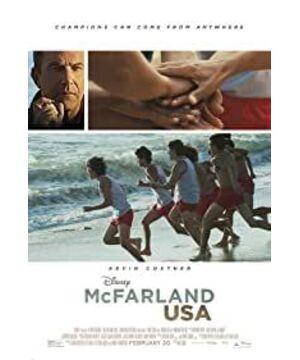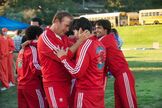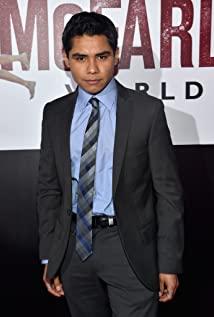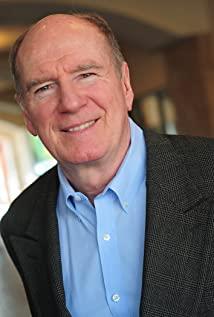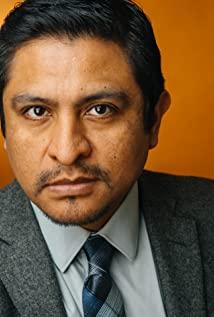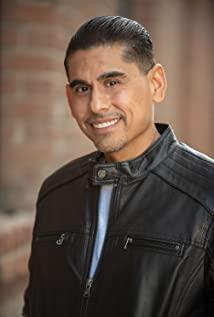Americans have already formed their own routines for making these kinds of movies. The basic structure is that a mature man (usually a coach or teacher) who has encountered setbacks goes to a hopeless place and meets a group of young people who are self-destructive. Then he I found some kind of talent in this group of young people. He and this group of children motivated each other, experienced rejection, hesitation, unity, conflict, and reconciliation, and finally reached the end of victory together. This is a basic paradigm of mainstream sports movies. But this paradigm cleverly corresponds to the psychological needs of most people.
McFarlane is an agricultural town with mostly Hispanic residents. There is only one McFarlane Middle School. The children here seem to have a destined destiny. They work as laborers, fall into a cycle of poverty and alcoholism, and are out of prison. In and out. Jim White was expelled from the original high school because of his hot temper and had to move here to earn a living in this local school. He basically broke down the day he came here with his wife and daughter. In the eyes of this standard American middle class, this place is basically a place outside the law, a paradise for crime. He just wanted to escape quickly. But he gradually discovered that many of these disobedient students have a talent for running. This group of children does not have a car at home, and they have to rely on running to move between school, home and working farm. In the eyes of ordinary people, unusually hard sports are just the normal life that these children have to face.
Jim White tried to persuade one child after another to join the trail running team. They have to wake up early every day to help their parents work, and then they have to attend classes before they can participate in training. Every child has to face unimaginable predicaments. Most people are enveloped by the hostility brought about by falling into poverty for too long, a father who is drunk and irritable, a mother who is helpless, and a hopeless future. They went out to participate in the competition and were ridiculed by high school students from favorable areas. They thought about giving up, but they persisted and finally achieved extremely good results.
There are some subtle details in "McFarlane", such as the coach teaching Jim White (white), the group of Mexican kids who originally called him "Old White". This is not only his name, but also his cultural identity. In the eyes of this group of low-level children, this "white man" is nothing more than a passer-by and an outsider. He who usually pampers him is only temporarily in frustration, he will not really understand MacFarlane's cruel rules. But what I didn't expect was that "Lao Bai" got into the local area a little bit, entered the families of each child, communicated with their parents, and went to the field to try to do rough work in person. He began to understand what real suffering was. Therefore, children can accept him. After a while, these young people began to call him "coach" instead of "old white". This change means that young people have a change in their identity. They recognize that they have become really promising athletes, rather than a group of wild boys.
This transition is the core part of this movie and even this kind of movie-the transformation of self-knowledge and the birth of dreams. If the first half of "McFarlane" describes the appearance of a desperate place, then the second half writes about what kind of motivation this ethereal thing can bring to people. The dream is only the first step. It is a combustion-supporting agent. What is important is that these young people have really taken action. They don't know what the result of running like this will be, but they know that running itself can effectively resist despair. As they wrote in the composition class, "When we run, we are God." This is the first time in their lives that these children feel that they can control their own destiny.
The reason why such sports inspirational movies move people is because many of them are based on real stories. Just like this "McFarlane" and the recently popular "Patchwork Dream", at the end of the film, rolling subtitles and photos tell you which universities the people in these movies went to later, and they will give this place in the future. What changes have been brought about, seems to be the real finishing touch.
The starring Kevin Costner’s interpretation is still very precise. This big-name star who has starred in "Bodyguard" and "Future Water World" and directed "Dancing with Wolves" puts a downright and proud coach with fear and disdain when he first arrived. , The process from aloft to mutual understanding is very real.
This kind of film has a sensational problem, because behind it there is a mainstream and hidden theme of the American dream, which tests the director's control. Moreover, this type of film must have the tone of wanting to promote first, and the first half of it can be more depressing, and the second half can be more uplifting. But in China, if shooting this kind of subject matter, whether the previously suppressed part can be allowed to be presented is still a question.
(Text/Yang Shiyang)
View more about McFarland, USA reviews


